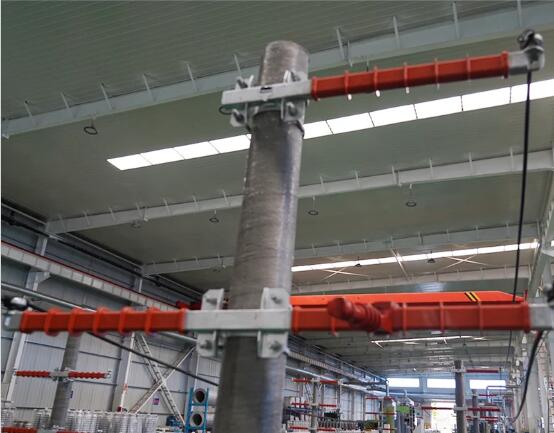Exploring Longevity: Lifespan Comparison of Polyurethane Composite Utility Poles and Traditional Materials
2024-02-26
Utility poles form the backbone of infrastructure networks, supporting power lines, telecommunications, and other essential services that keep our modern world connected. The choice of materials for utility pole construction is critical, as it directly impacts reliability, maintenance costs, and overall longevity. Among the various materials available, polyurethane composite utility poles have emerged as a compelling alternative to traditional options like wood and steel. In this blog, we'll delve into how the lifespan of polyurethane composite utility poles compares to other commonly used materials in utility pole construction.
Wooden Utility Poles:
Wooden utility poles have been a staple in the industry for decades due to their availability, affordability, and ease of installation. However, their lifespan is often limited by factors such as rot, insect infestation, and weathering. On average, wooden utility poles have a lifespan ranging from 25 to 50 years, depending on the species of wood, treatment methods, and environmental conditions. In areas with high humidity, moisture, or insect activity, wooden poles may deteriorate more rapidly, necessitating frequent replacements and maintenance.
Steel Utility Poles:
Steel utility poles are renowned for their strength, durability, and resistance to environmental factors like rot and insect damage. However, they are susceptible to corrosion, especially in coastal regions or areas with high levels of industrial pollution. Without proper maintenance and corrosion protection, steel poles can degrade over time, compromising their structural integrity and safety. On average, steel utility poles have a lifespan of 50 to 75 years, but this can vary significantly depending on the level of corrosion resistance measures employed and the severity of environmental exposure.
Polyurethane Composite Utility Poles:
Polyurethane composite utility poles represent a modern alternative that combines the best features of wood and steel while addressing their inherent limitations. These poles are engineered using advanced materials and manufacturing processes to offer exceptional durability, weather resistance, and longevity. Unlike wood, polyurethane composite poles are impervious to rot, insect infestation, and moisture absorption, ensuring a significantly extended lifespan. Similarly, they outperform steel poles in terms of corrosion resistance, making them suitable for a wide range of environments, including coastal areas and industrial zones.
On average, polyurethane composite utility poles boast a lifespan of 75 to 100 years or more, surpassing both wooden and steel poles in longevity. This extended lifespan translates to reduced maintenance costs, fewer replacements, and enhanced reliability for utility companies and their customers. Additionally, polyurethane composite poles require minimal upkeep, as they do not require painting or treatment to maintain their structural integrity over time.
In conclusion, the lifespan of polyurethane composite utility poles far exceeds that of traditional materials like wood and steel. Their superior durability, weather resistance, and corrosion resistance make them an ideal choice for utility pole construction in various environments. As the demand for sustainable and long-lasting infrastructure solutions continues to rise, polyurethane composite utility poles are poised to play a pivotal role in shaping the future of utility networks worldwide.
 Polyurethane Composite Utility Poles
Polyurethane Composite Utility Poles


